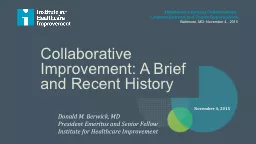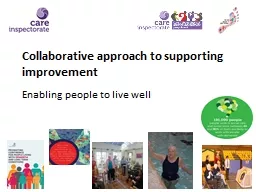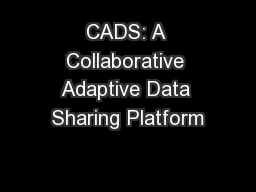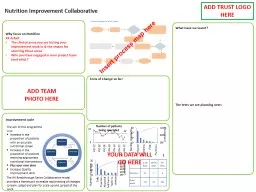PPT-Collaborative Improvement: A Brief and Recent History
Author : joyousbudweiser | Published Date : 2020-08-27
Healthcare Learning Collaboratives Lessons Learned and Future Opportunities Baltimore MD November 4 2015 November 4 2015 Donald M Berwick MD President Emeritus
Presentation Embed Code
Download Presentation
Download Presentation The PPT/PDF document "Collaborative Improvement: A Brief and R..." is the property of its rightful owner. Permission is granted to download and print the materials on this website for personal, non-commercial use only, and to display it on your personal computer provided you do not modify the materials and that you retain all copyright notices contained in the materials. By downloading content from our website, you accept the terms of this agreement.
Collaborative Improvement: A Brief and Recent History: Transcript
Download Rules Of Document
"Collaborative Improvement: A Brief and Recent History"The content belongs to its owner. You may download and print it for personal use, without modification, and keep all copyright notices. By downloading, you agree to these terms.
Related Documents














